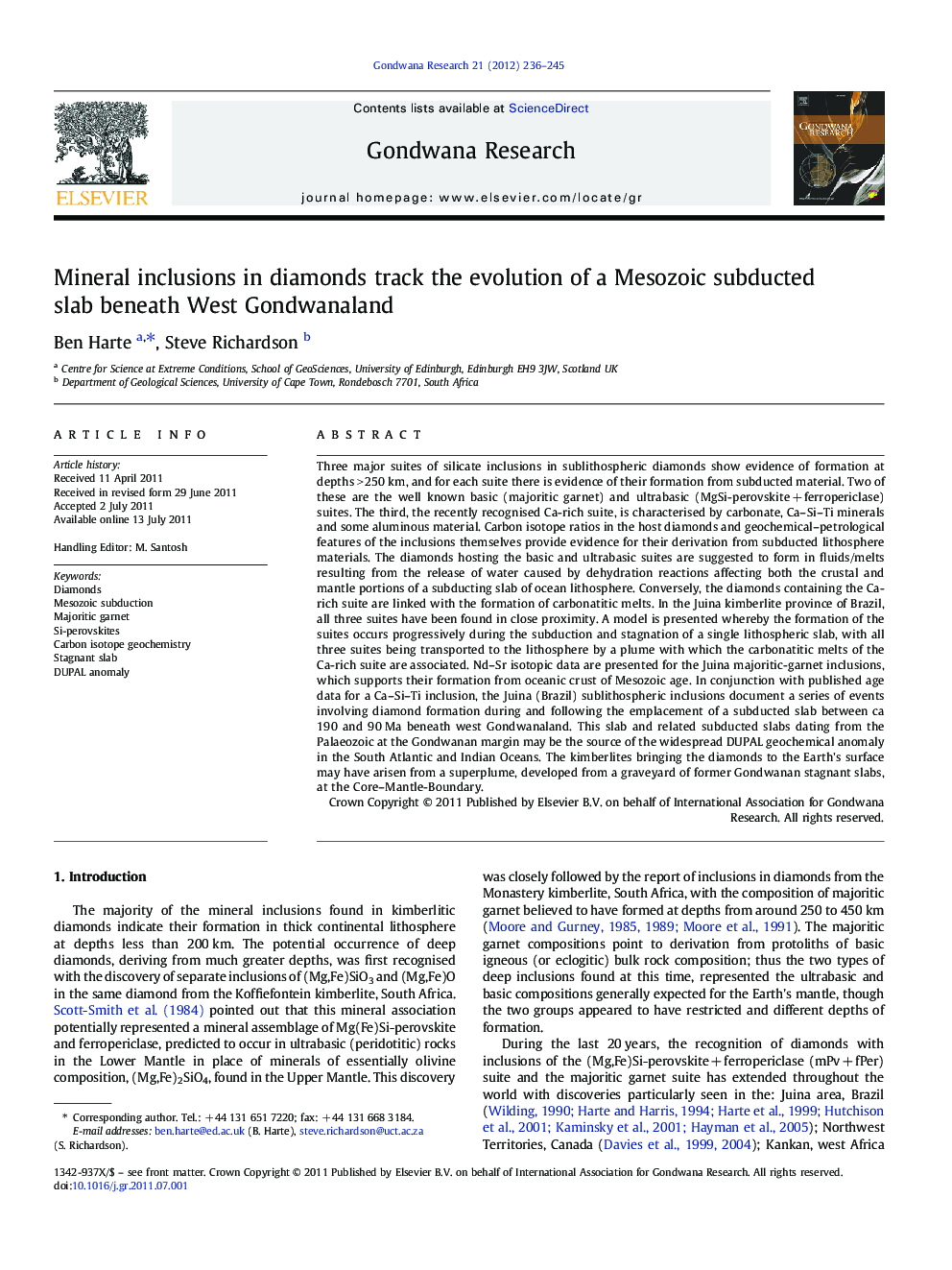| کد مقاله | کد نشریه | سال انتشار | مقاله انگلیسی | نسخه تمام متن |
|---|---|---|---|---|
| 4727395 | 1356373 | 2012 | 10 صفحه PDF | دانلود رایگان |

Three major suites of silicate inclusions in sublithospheric diamonds show evidence of formation at depths > 250 km, and for each suite there is evidence of their formation from subducted material. Two of these are the well known basic (majoritic garnet) and ultrabasic (MgSi-perovskite + ferropericlase) suites. The third, the recently recognised Ca-rich suite, is characterised by carbonate, Ca–Si–Ti minerals and some aluminous material. Carbon isotope ratios in the host diamonds and geochemical–petrological features of the inclusions themselves provide evidence for their derivation from subducted lithosphere materials. The diamonds hosting the basic and ultrabasic suites are suggested to form in fluids/melts resulting from the release of water caused by dehydration reactions affecting both the crustal and mantle portions of a subducting slab of ocean lithosphere. Conversely, the diamonds containing the Ca-rich suite are linked with the formation of carbonatitic melts. In the Juina kimberlite province of Brazil, all three suites have been found in close proximity. A model is presented whereby the formation of the suites occurs progressively during the subduction and stagnation of a single lithospheric slab, with all three suites being transported to the lithosphere by a plume with which the carbonatitic melts of the Ca-rich suite are associated. Nd–Sr isotopic data are presented for the Juina majoritic-garnet inclusions, which supports their formation from oceanic crust of Mesozoic age. In conjunction with published age data for a Ca–Si–Ti inclusion, the Juina (Brazil) sublithospheric inclusions document a series of events involving diamond formation during and following the emplacement of a subducted slab between ca 190 and 90 Ma beneath west Gondwanaland. This slab and related subducted slabs dating from the Palaeozoic at the Gondwanan margin may be the source of the widespread DUPAL geochemical anomaly in the South Atlantic and Indian Oceans. The kimberlites bringing the diamonds to the Earth's surface may have arisen from a superplume, developed from a graveyard of former Gondwanan stagnant slabs, at the Core–Mantle-Boundary.
Figure optionsDownload as PowerPoint slideHighlights
► Inclusions in diamonds from > 250 km depth derive from subducted oceanic slabs.
► The history of a Mesozoic subducted slab is revealed by Brazilian diamonds.
► The subducted slab gave rise to the DUPAL anomaly of the South Atlantic ocean.
Journal: Gondwana Research - Volume 21, Issue 1, January 2012, Pages 236–245